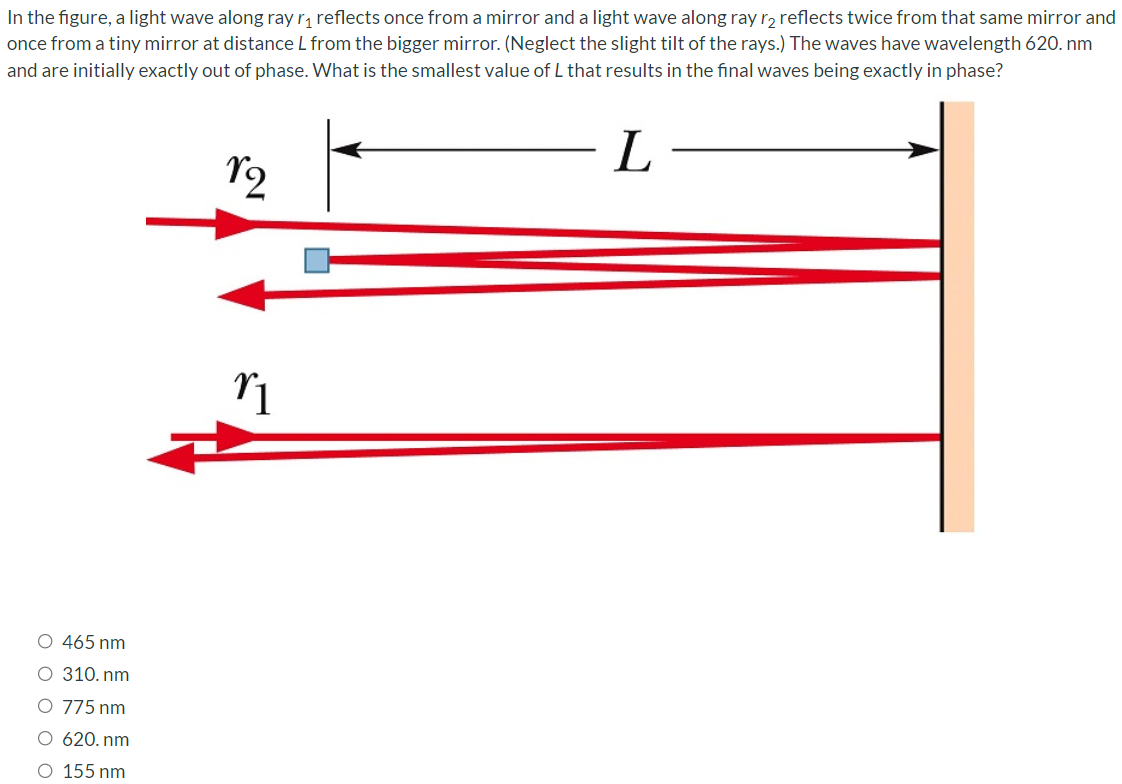In the figure, a light wave along ray r1 reflects once from a mirror and a light wave along ray r2 reflects twice from that same mirror and once from a tiny mirror at distance L from the bigger mirror. (Neglect the slight tilt of the rays.) The waves have wavelength 620. nm and are initially exactly out of phase. What is the smallest value of L that results in the final waves being exactly in phase? 465 nm 310. nm 775 nm 620. nm 155 nm
